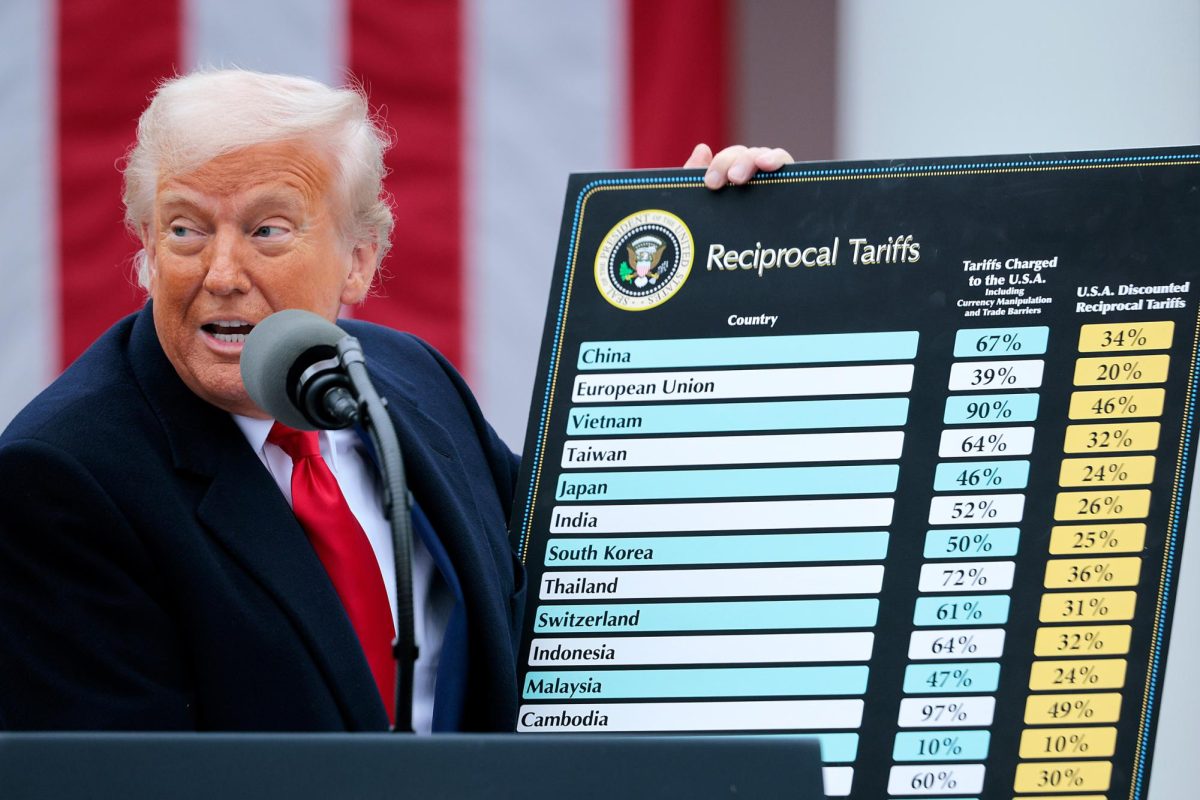On April 2, President Donald Trump’s announcement of sweeping new tariffs marked one of the most aggressive and unpredictable shifts in U.S. trade policy in recent history. The administration has since implemented a 90-day pause on many of the tariffs following intense backlash, but the initial announcement alone sent shockwaves through global markets and diplomatic circles. By unilaterally imposing duties on imports from nearly every country, Trump revealed a shocking incoherent trade strategy — one that risks alienating allies, undermining economic stability, and eroding America’s global credibility. Trump’s reckless tariff policy isn’t just economically disruptive, it signals a deeper shift toward isolationism, which endangers America’s standing as a geopolitical leader, damages long-standing alliances, and opens the door for adversaries to reshape global order.
Trump’s sweeping tariff plan isn’t targeted — it’s total. In his announcement, he branded it “Liberation Day,” and unveiled a 10% blanket tariff on all imported goods from every country except for Mexico and Canada. This tariff policy isn’t a strategic move aimed at one or two countries engaged in unfair trade practices — it’s a scorched earth approach that spares no one. On top of these sweeping baseline tariffs, the president slapped even higher tariffs on 57 countries, including long-standing allies like India, Japan, South Korea, and Switzerland. These are nations that have worked closely with the U.S. on trade, defense, and diplomacy for decades.
Immediately after Trump’s reckless announcement, U.S. markets plummeted. Investors responded with alarm to the tariffs, triggering sharp declines in the Dow Jones, S&P 500, and Nasdaq. Rather than targeting real trade distortions, Trump’s broad tariffs created economic turbulence with no clear payoff, prompting markets to recoil. If the Trump administration wanted to implement tariffs to support a specific industry, there are more strategic and less disruptive ways to do it. Targeted tariffs can be effective when they’re carefully designed to address clear, documented trade imbalances, like when foreign competitors flood the market with artificially cheap goods. For example, if American steel producers are struggling due to unfair subsidies abroad, a narrowly applied tariff on imported steel might help to level the playing field. But that’s a far cry from slapping blanket tariffs on nearly every product from almost every country.
We’ve seen what effective trade reform can look like, even during the first Trump administration. The U.S.-Mexico-Canada Agreement, which replaced the North American Free Trade Agreement in 2018, is an example of how trade relationships can be updated and renegotiated without resorting to a full-blown trade war. Though not perfect, the USMCA was the result of months of negotiations and included specific provisions to address labor standards, intellectual property, and digital trade. It preserved critical supply chains across North America while making targeted adjustments to benefit American industries. That kind of deliberate, negotiated approach stands in stark contrast to Trump’s latest tariff blitz, which seems more focused on provoking even more conflict than solving existing ones.
The USMCA shows that trade reform does not require isolation or confrontation. When approached thoughtfully, it’s possible to modernize trade policy while preserving international cooperation and maintaining economic stability. A serious effort to strengthen American industry would focus on innovation, workforce development, and smart negotiations — not on estranging allies or destabilizing trade.
After facing swift and intense backlash from the business community, international partners, and even some within his own party, Trump paused many of these extreme tariffs on every country except for China, effectively making China his primary target. While this sudden change is a welcome step to prevent immediate disaster, a significant portion of damage has already been done. Announcing sweeping tariffs, triggering global panic, then partially reversing course only deepened the perception that U.S. trade policy under Trump is erratic and unreliable. This kind of volatility doesn’t project strength but confusion, undermining the credibility of American leadership on the world stage.
This damage doesn’t only have economic ramifications, it also has serious geopolitical consequences. By carelessly slapping tariffs on countries that have long been considered vital allies, the U.S. sends a message that loyalty and cooperation no longer matter. Nations like Japan, India, and members of the European Union must stand shoulder-to-shoulder with the U.S. in facing critical global challenges, from coordinating defense strategies and managing climate change, to countering adversarial influence. Alienating American allies weakens collective action, fractures trust, and opens the door for adversaries to step in and reshape the global order on their terms.
Trump’s constant tariff threats treat trusted allies like strategic rivals, disregarding decades of hard-earned diplomatic relationships. The Trump administration’s tactics not only strain relationships abroad but also create openings for other global powers, particularly China and Russia, to step in and strengthen ties with the nations we are inexplicably pushing away. In an increasingly multipolar world, the U.S. can’t afford to alienate its closest allies.
America’s strength has never come from isolation. It has come from cooperation, consistency, and leadership. Trump’s callous tariff strategy abandons those principles in favor of chaos, confrontation, and theatrics. Rather than strengthening the economy or protecting American workers through precise and carefully coordinated tariffs, this approach risks alienating our allies, destabilizing global markets, and eroding the trust that underpins our international influence. The world is watching, and what they see is the U.S. turning its back on the global order it helped establish. To remain a global economic leader, America must reject the illusion that isolation is a strength and instead embrace a trade strategy rooted in clarity, stability, and collaboration.










